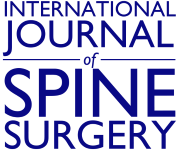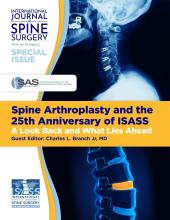ABSTRACT
Background To update vertebral augmentation literature by comparing outcomes between vertebroplasty (VP), balloon kyphoplasty (BKP), vertebral augmentation with implant (VAI), and nonsurgical management (NSM) for treating vertebral compression fractures (VCFs).
Methods A PubMed literature search was conducted with keywords kyphoplasty, vertebroplasty, vertebral body stent, and vertebral augmentation AND implant for English-language articles from February 1, 2011, to November 22, 2016. Among the results, 25 met the inclusion criteria for the meta-analysis. Inclusion criteria were prospective comparative studies for mid-/lower-thoracic and lumbar VCFs enrolling at least 20 patients. Exclusion criteria included studies that were single arm, systematic reviews and meta-analyses, traumatic nonosteoporotic or cancer-related fractures, lack of clinical outcomes, or non–Level I and non–Level II studies. Standardized mean difference between baseline and end point for each outcome was calculated, and treatment groups were pooled using random effects meta-analysis.
Results Visual analog scale pain reduction for BKP and VP was −4.05 and −3.88, respectively. VP was better than but not significantly different from NSM (−2.66), yet BKP showed significant improvement from both NSM and VAI (−2.77). The Oswestry Disability Index reduction for BKP showed a significant improvement over VAI (P < .001). There was no significant difference in changes between BKP and VP for anterior (P = .226) and posterior (P = .293) vertebral height restoration. There was no significant difference in subsequent fractures following BKP (32.7%; 95% confidence interval [CI]: 8.8%–56.6%) or VP (28.3%; 95% CI: 7.0%–49.7%) compared with NSM (15.9%; 95% CI: 5.2%–26.6%).
Conclusions/Level of Evidence Based on Level I and II studies, BKP had significantly better and VP tended to have better pain reduction compared with NSM. BKP tended to have better height restoration than VP. Additionally, BKP had significant improvements in pain reduction and disability score as compared with VAI.
Clinical Relevance This meta-analysis serves to further define and support the safety and efficacy of vertebral augmentation.
Footnotes
Disclosures and COI: This meta-analysis was conducted with funding from the International Society for the Advancement of Spine Surgery (ISASS); Benvenue Medical, Inc; DePuy Synthes Spine, a division of DePuy Orthopaedics, Inc; DFINE Inc; Globus Medical, Inc; Medtronic Sofamor Danek USA, Inc; and Stryker. Douglas Beall reports the following disclosures unrelated to the preparation of this manuscript: compensation, grants, and personal fees from Medtronic related to consultancy, research and teaching; grants from Benvenue, Alphatech Spine, Medical Metrics, Liventa, Vexim, and Mesoblast; consultancy fees from DEFINE and Osseon; other from Lilly, Smith & Nephew, Biomet, Vertiflex, Synthes, and Integral Spine Solutions. Morgan Lorio reports the following disclosures unrelated to the preparation of this manuscript: royalties from Choice Spine Thunderbolt, stock ownership in Orthogenerex, stock options with OrthoKinematics, intellectual property with Transformer Spine, investigator for Acadia Facet IDE Trial. B. Min Yun and Maria J. Runa are employees of Exponent, a scientific and engineering consulting firm. They have no other disclosures. Kevin Ong reports the following disclosures: employee and shareholder of Exponent, a scientific and engineering consulting firm. Exponent has been paid fees by entities in the biomedical arena for consulting services, including Zimmer Biomet, Stryker Orthopaedics, Joerns Healthcare, Ossur, DJO, Ethicon, Ferring Pharmaceuticals, Pacira Pharmaceuticals, Paradigm Spine, and Medtronic. Christopher B. Warner reports no disclosures.
- ©International Society for the Advancement of Spine Surgery







